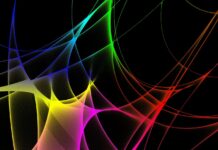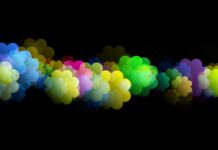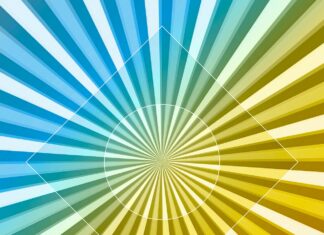Artificial intelligence (AI) has been making significant strides in various fields, and the realm of creative expression is no exception. Among the cutting-edge AI models, Leonardo AI stands out as a revolutionary tool that pushes the boundaries of creativity and empowers artists, designers, and creators to bring their visions to life. In this article, we will delve into the world of Leonardo AI, exploring its capabilities, applications, and impact on the creative landscape.
Overview of Leonardo AI
Leonardo AI is a state-of-the-art AI model developed by OpenAI, built on the GPT-3 architecture, the latest version of the groundbreaking GPT (Generative Pre-trained Transformer) series. Leonardo AI is designed to facilitate creative tasks by generating visual content, including images, illustrations, and designs. It has been trained on a vast corpus of visual data, allowing it to understand and mimic various artistic styles, techniques, and elements. With its immense computational power and advanced machine learning algorithms, Leonardo AI can generate high-quality visual content that rivals human-created artwork.
One of the unique features of Leonardo AI is its interactive and collaborative nature. Users can engage with the model in a dynamic and iterative manner, providing prompts, feedback, and direction to guide its creative output. This allows artists and creators to have a dialogue with the AI model, influencing the creative process and shaping the final outcome according to their vision. Leonardo AI serves as a powerful tool that can augment and amplify the creative abilities of artists, designers, and creators, inspiring them to explore new ideas and possibilities.
Capabilities of Leonardo AI
Leonardo AI has a wide range of capabilities that make it a versatile and powerful tool for creative expression. Here are some of the key capabilities of Leonardo AI:
Artistic Style Generation: Leonardo AI can generate visual content in various artistic styles, ranging from classical to contemporary, abstract to realistic, and everything in between. Users can specify the desired artistic style through prompts, and Leonardo AI can generate artwork that aligns with the given style. This allows artists and designers to experiment with different styles and aesthetics, giving them the freedom to explore new artistic horizons.
Image Synthesis: Leonardo AI can synthesize new images based on given prompts, allowing users to generate visual content from scratch. For example, users can provide a description of a scene or an object, and Leonardo AI can generate an image that corresponds to the description. This opens up possibilities for creating original artwork, visualizing abstract concepts, or generating visual content for various media.
Illustration and Design Assistance: Leonardo AI can provide assistance in creating illustrations and designs. Users can provide rough sketches, descriptions, or ideas as prompts, and Leonardo AI can generate refined illustrations or designs based on the given input. This can be particularly useful for artists and designers who are looking for inspiration, conceptualizing ideas, or exploring different design options.
Concept Visualization: Leonardo AI can help users visualize abstract concepts or ideas through visual representations. Users can provide prompts that describe the desired concept, and Leonardo AI can generate visual content that helps convey the intended message or meaning. This can be valuable in fields such as advertising, branding, and communication, where visual representations play a crucial role in conveying messages effectively.
Collaborative Content Creation: Leonardo AI enables collaborative content creation between humans and machines. Users can engage in an iterative and interactive process with the model, providing prompts, feedback, and direction to influence the creative output. This collaborative approach allows artists, designers, and creators to work in tandem with the AI model, combining their creative insights with the capabilities of the model to create unique and compelling visual content.
Applications of Leonardo AI
Leonardo AI has a wide range of applications across various industries and creative fields. Here are several areas where Leonardo AI can be utilized to enhance creative processes and drive innovation. Here are some examples:
Art and Design: Leonardo AI can be used by artists, designers, and creative professionals to generate artwork, illustrations, designs, and other visual content. It can serve as a source of inspiration, providing new ideas and possibilities for creative expression. Artists can experiment with different styles, techniques, and aesthetics, while designers can use Leonardo AI to generate design options or visualize concepts.
Advertising and Marketing: Leonardo AI can be utilized in advertising and marketing campaigns to generate visual content that captures the attention of target audiences. It can create eye-catching visuals, infographics, and illustrations that convey the intended messages effectively. Leonardo AI can also help in branding efforts by generating visual representations that align with the brand identity and values.
Gaming and Entertainment: Leonardo AI can be used in the gaming and entertainment industry to generate visual assets, characters, environments, and other creative elements. It can assist game developers, animators, and visual effects artists in creating realistic and visually stunning content. Leonardo AI can also generate concept art, storyboards, and visualizations for films, animations, and other multimedia projects.
Education and Training: Leonardo AI can be used in educational settings to generate visual aids, illustrations, and diagrams that facilitate learning and understanding of complex concepts. It can help educators create visually appealing and engaging educational materials, such as textbooks, online courses, and interactive simulations. Leonardo AI can also generate visual content for training materials, tutorials, and presentations in various industries.
Product and Industrial Design: Leonardo AI can be used in product and industrial design to generate design concepts, prototypes, and visualizations. It can help designers explore different design options, create virtual prototypes, and visualize how products would look in different environments. Leonardo AI can also generate design elements, such as patterns, textures, and color schemes, that can be used in product design.
Architecture and Interior Design: Leonardo AI can be used in architecture and interior design to generate visual representations of buildings, interiors, and spaces. It can help architects and interior designers create virtual walkthroughs, 3D visualizations, and renderings of their designs. Leonardo AI can also generate design elements, such as furniture, fixtures, and lighting options, that can be used in interior design projects.
Fashion and Textile Design: Leonardo AI can be used in fashion and textile design to generate design concepts, patterns, and textures. It can assist fashion designers in creating virtual prototypes, visualizing how garments would look on models, and generating design elements, such as prints, colors, and textures. Leonardo AI can also be used in textile design to generate patterns, weaves, and textures for fabrics.
Social Media and Content Creation: Leonardo AI can be used by content creators, social media influencers, and digital marketers to generate visual content for social media platforms, websites, and blogs. It can create visually appealing graphics, infographics, and illustrations that engage audiences and drive traffic. Leonardo AI can also help content creators generate visual content for storytelling, digital art, and other forms of online content creation.
Impact of Leonardo AI on the Creative Landscape
The introduction of Leonardo AI has the potential to revolutionize the creative landscape in several ways. Here are some of the potential impacts of Leonardo AI:
Enhancing Creativity: Leonardo AI can augment the creative abilities of artists, designers, and creators by providing new ideas, styles, and possibilities for creative expression. It can push the boundaries of what is possible in art and design, opening up new horizons for creativity and innovation. Artists and designers can use Leonardo AI as a tool to expand their creative repertoire and explore new artistic directions.
Accelerating Design and Production Processes: Leonardo AI can speed up the design and production processes in various creative industries. With its ability to generate visual content quickly and efficiently, Leonardo AI can streamline the creative workflow, reducing the time and effort required to create visual assets. This can result in increased productivity, faster turnaround times, and reduced costs in the creative production process.
Enhancing Visual Communication: Leonardo AI can improve visual communication by generating visually appealing and effective content that conveys messages clearly and effectively. Whether it’s in advertising, marketing, education, or other fields, Leonardo AI-generated visuals can capture the attention of audiences and convey information in a visually engaging way, leading to better communication and understanding.
Democratizing Creativity: Leonardo AI has the potential to democratize creativity by making creative tools and content accessible to a wider range of users. With its ability to generate visual content without requiring advanced artistic skills, Leonardo AI can empower non-creative professionals, hobbyists, and amateurs to create visually appealing content for their personal or professional use. This can open up new opportunities for creative expression and innovation for individuals who may not have traditional artistic skills.
Redefining the Role of Creatives: The advent of Leonardo AI may also redefine the role of creatives in the creative process. While Leonardo AI can assist in generating visual content, it cannot replace the unique human creativity, imagination, and emotional intelligence that artists, designers, and creators bring to their work. Instead of replacing creatives, Leonardo AI can serve as a valuable tool that complements their skills, helping them to explore new possibilities, experiment with different ideas, and enhance their creative output.






















